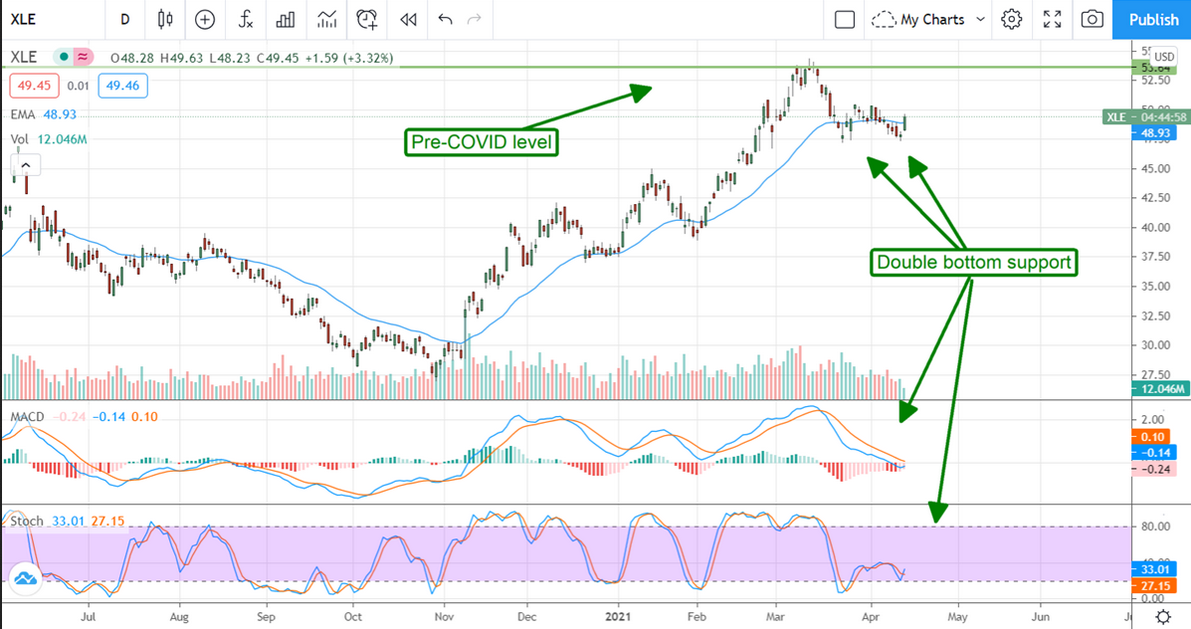Oil Prices Set To Rise On Growing Demand
Based on the data it sure looks like oil prices are about to move higher. Not only is the world demand picture brightening but production has yet to pick up. The latest inventory data from EIA underscores this statement as it shows not only an acceleration of weekly drawdowns but a continuation of the trend of weaker than expected data.
The latest read shows crude oil inventory in the U.S. is down 5.889 million barrels versus the -2.889 that was expected and last week’s -3.522 million. At this rate, we can expect to see crude inventories fall by double-digits within the next few weeks and that really isn’t a far-fetched idea. At the rate economic activity is picking up and with the warmer weather upon us, demand in the U.S. is skyrocketing.

The latest estimates from OPEC are evidence not only of rising U.S. demand but rising global demand. The cartel estimated global demand would rise by 5.95 million barrels per day versus the 0.07 million BPD estimated just one month ago. At that pace, global consumption should outpace production (assuming no production increases) and help to underpin prices for WTI and Brent. Even with ramping production, it will take time for the producers to catch up with demand and we expect demand will accelerate strongly into the end of summer and early fall. The bottom line, oil prices are rising and will drive profits for the oil companies.
The Big Oil Companies Are About To Bank On The Recovery
The S&P 500 Energy Sector isn’t expected to have a great quarter for the Q1 period but this is the end of the bad times. The -15% that is expected by the analyst’s community is versus a hard comp in the previous year and the last hard comp the sector will have to face for some time. Looking forward, the expectations for revenue and earnings rebound is so strong few if any analysis will put a number on it. Between rising demand and rising prices, the best Factset can do is leave the Energy column blank in its weekly Earnings Insight report.
Notably, the Energy sector has seen the largest upgrades from the analyst’s community of any sector in the index, and yets its shares are still lagging the broader market. In terms of the analyst consensus estimates, the Energy Sector has the highest implied upside of any S&P 500 sector and we think that is a cautious estimate. Exxon (NYSE:XOM), the single largest holding in the XLE ETF, is expected to see revenue and earnings flat to slightly up from the year-ago period and could easily top that figure. It’s set to report in two weeks and could be the spark that drives the XLE ETF to a new multi-year high.
Energy Pays A High Yielding Dividend
The Energy sector is a high-yielding sector but that by itself isn’t enough to get us interested. Couple the high yield with rising commodity prices, rising demand, and rising production and we have a recipe for high yield and improving dividend health which is something we like. Exxon is yielding close to 6.25% with shares at $57.75, the XLE about 4.5% while trading at relative levels, and both could see increases this year after blowout results and windfall profits.
The Technical Outlook: The XLE Is Moving Higher
The Energy Sector SPDR XLE retreated from its high a few weeks ago and has since consolidated and formed a bottom. The bottom confirmed today following the EIA inventory data and a similar move in oil prices. At this point in the game, it looks like WTI will move back up to the $63 level and probably higher unless there is a major hiccup in the recovery, or production ramps faster than expected. Regardless, oil is trading at the highest level in years and at levels the oil company’s can leverage into profits.

